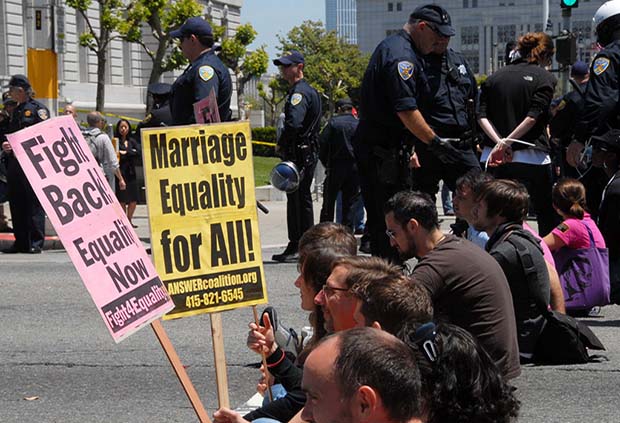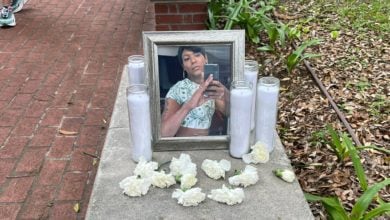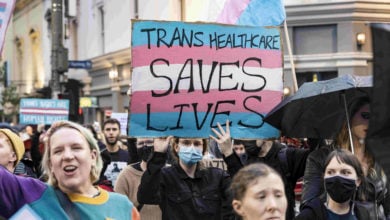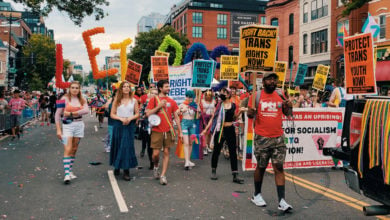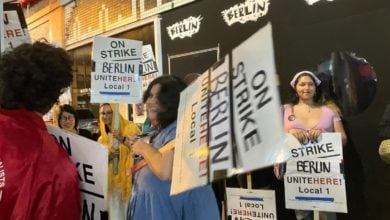The fight for equal same-sex marriage rights has dominated much of the news and activism of the LGBTQ community over the last decade. In 2004, not a single state allowed for same-sex marriage. Now, same-sex couples can get married in 19 states, the District of Columbia and eight Native tribal jurisdictions. In additional states, federal judges have struck down bans on same-sex marriage but the ability to marry has been halted pending appeal.
Even in states that have been strongholds of the bigoted right wing, like Texas, Oklahoma, Arkansas and Kentucky, courts this year struck down their bans as unconstitutional. At the time of publication, North Dakota is the only state in the country where there is no legal challenge to the ban; cases are now pending in 30 states with same-sex marriage bans.
Origins of marriage equality struggle
These current victories are rooted in the movement launched by the historic Stonewall Rebellion of 1969.
The Stonewall uprising against police harassment represented a demand by LGBTQ people to be treated with respect and dignity. In the decade following Stonewall, this struggle extended into all aspects of life. The movement fought for anti-discrimination ordinances and legislation, battling right-wing reaction the entire way. These gains led to efforts to win domestic partner benefits at work and recognition in employment, housing and health care. The demand for same-sex marriage equality is a natural extension of those struggles.
For the capitalists, marriage is fundamentally a legal arrangement to maintain ownership of property and wealth through inheritance. Extending marriage rights to same-sex couples does not alter that.
For workers, intimacy and companionship are battered by the pressures of earning a living and keeping a family intact. For LGBTQ workers, that is compounded by the institutional and societal bigotry that comes with same-sex relationships. The fight for marriage equality has directly challenged this bigotry, and successfully reduced its hold on large sections of the population. There is no question it has shifted popular attitudes about the struggles of LGBTQ people in general. Marriage equality is not a solution for oppression; it is a reform to lessen its brutal effects.
The 2003 Supreme Court decision in Lawrence v. Texas struck down existing sodomy laws and opened the door for legal recognition of same-sex marriages. In 2004, the initiation of same-sex marriages in San Francisco and the ensuing struggle over it captured the attention of the world. In subsequent years, activism on the issue has ranged from legislation and legal maneuvering to heated street protests with mass arrests and civil disobedience. In June 2013, a Supreme Court ruling allowed federal benefits to be extended to married same-sex partners. This opened yet another wave of energy to enact new laws in many states.
Initially, many victories were won in courts or through executive decision. But more and more, initiatives and referendums are being won to secure same-sex rights, requiring a majority of the voters to pass them.
While the struggle has taken many forms, there is no denying that active grassroots efforts were fundamental in winning the hearts and minds of voters across the country.
Marriage an issue of access to fundamental rights
Revolutionaries should support the rights of the working-class to gain access to bourgeois rights and institutions, from voting rights to access to higher education to the right to be married. In addition to the subjective societal implications of marriage and its significance in registering changing attitudes, in the United States it grants parties access to 1,138 federal rights and protections. It is a fundamental civil rights issue for all people to have equal access to government benefits.For instance, social security — a hard-fought gain of the working class — gives benefits,through marriage, to the surviving spouse and surviving parent. All people should have the legal right to visit their spouse, child and parent in a hospital, to benefit from the Family and Medical Leave Act, and to gain health insurance through a spouse’s employment. There are estimated to be around 30,000 same-sex binational couples living in the United States who need the right to petition for their spouse to immigrate.
While marriage should not be a prerequisite to access any of these rights, right now it is a requirement, and so we should fight for all people to have equal access.
Legal recognition is also vital to same-sex couples raising children. It is estimated that the proportion of Black and Latino same-sex couples raising children is twice that of white same-sex couples, and they are also more likely to be living in poverty. Geographically, same-sex couples in the South are more likely to be raising children than those in other parts of the country, and again, are more likely to be living in poverty. This makes access to the rights and benefits of marriage vital to these couples.Not all working-class and poor couples who live in states without marriage equality are able to expend the resources necessary to travel to a state in which they can be married. Even if they are, they will be denied some federal benefits if the state in which they reside does not recognize their out-of-state marriage.
This means the struggle for marriage equality must continue.
Struggle for marriage equality builds unity among oppressed groups
These victories have clearly gone beyond the LGBTQ community, garnering broad support from many sectors of society. The emerging, widespread support for LGBTQ equality is reflected most clearly in changing opinions especially among young people. Recent support from entertainment and sports figures has helped cut through stereotypes and bias.
In part, these successes are due to efforts by the LGBTQ community to build coalitions. The appeal for simple equal rights has resonated with other sectors of society long denied such justice, including African American
people, women and immigrants.
In 2012, voters passed initiatives in Maryland, Washington and Maine, while defeating a ban in Minnesota. In Maryland, LGBTQ organizers created a formal alliance with immigrant rights organizers promoting the state’s DREAM Act to support each other’s efforts. Likewise, the role of African American voters and civil rights leaders was especially significant to the victory there.
Opponents of marriage equality often attempt to divide the Black and LGBTQ communities, attacking the LGBTQ struggle while at the same time slandering Black voters as bigots. In the Maryland referendum, however, half of all African American voters supported the ballot initiative. Prominent Black religious leaders —including Rev. Delman Coates of Clinton, Maryland, and Rev. Donte Hickman of East Baltimore —emerged as leading figures in support of the legislation, appearing in many television ads
“As pastors and clergy leaders, we are here today to declare our unequivocal support for Maryland’s Civil Marriage Protection Act and to dispel the myth that all African-American pastors are fundamentally opposed to the idea of marriage equality,” Coates told an audience at the National Press Club.
Currently, 43 percent of people in the United States live in a place with some recognition of marriage equality, civil unions or domestic partnership. This is a rapid advance, but the fight is far from over.
Marriage rights are only one aspect of the struggle for equality. There still exists no national employment anti-discrimination legislation for LGBTQ people. Trans people still face systematic bigotry and brutality, and queer youth face rejection and homelessness. The fight for marriage equality is one stepping stone and an incubator for struggles to come, and full LGBTQ liberation.

